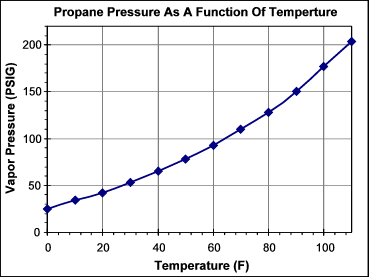I recently (a few days ago) started working on my pneumatic (soon-to-be-hybrid), and modded it so that it is no longer seals directly onto the barrel but uses a very long piston that seals against a bushing on the barrel side, and into a nipple on the back end (using an adapter as stop). When the piston slides forward, the back end is only out of the nipple by maybe 1/4". Pilot valve opens, piston slides back flawlessly. Right now, it's just a pneumatic, but I yesterday assembled a mechanism to meter and inject propane into the chamber. I have a few questions regarding the feasibility of the build now... probably should have asked these earlier, but oh well, I can mod it if I need to.
Question one: Does anyone know of an easy high-pressure tolerance method to inject propane into a chamber (through a shcrader is preferred- I already looked around on the hybrid section, not sure if any of the ideas will deal with high pressures well)?
Question two: What is the internal pressure of a propane tank (I know it is stored as a liquid so it will stay fairly constant through use)?
Question three: Advantages/disadvantages to Propane vs MAPP?
Propane questions...
- Crna Legija
- First Sergeant 2

- Posts: 2333
- Joined: Sun Jul 20, 2008 5:14 am
- Location: australia
lol just found this out 2min ago its about 120psi or 8 bar
'' To alcohol... The cause of, and solution to, all of life's problems.”
--Homer Simpson
Add me on ps3: wannafuk, 8/11/11 cant wait
--Homer Simpson
Add me on ps3: wannafuk, 8/11/11 cant wait
- Gaderelguitarist
- Corporal

- Posts: 580
- Joined: Sat Aug 16, 2008 9:56 pm
- Location: Columbia, MD
- Contact:
Are you converting it into a combustion or a hybrid?
1. If you're making a combustion, you can easily inject the propane via a metering device. If this is going to be a hybrid, you can take the same approach, but will then pressurize with air afterwards. either connect the metering device to the chamber with a threaded elbow, or thread on a female quick disconnect. The FQD has a seal preventing back flow.
*Question two has been answered*
3. Mapp gas burns faster than propane.
1. If you're making a combustion, you can easily inject the propane via a metering device. If this is going to be a hybrid, you can take the same approach, but will then pressurize with air afterwards. either connect the metering device to the chamber with a threaded elbow, or thread on a female quick disconnect. The FQD has a seal preventing back flow.
*Question two has been answered*
3. Mapp gas burns faster than propane.
so many muchness
- MrCrowley
- Moderator

- Posts: 10078
- Joined: Fri Jun 23, 2006 10:42 pm
- Location: Auckland, New Zealand
- Been thanked: 3 times
If it seals against the barrel, it is a barrel-sealing designmodded it so that it is no longer a barrel-sealing design, but it uses a very long piston that seals against a bushing on the barrel side, and into a nipple on the back end (using an adapter as stop). When the piston slides forward, the back end is only out of the nipple by maybe 1/4". Pilot valve opens, piston slides back flawlessly.
I don't understand what's different between your piston and any other coaxial cannon piston, it is a coaxial cannon piston, right?
Not a coax, it's a tee piston. Seals against a bushing that the barrel screws into, so it can still actually fire a jet of air without a barrel, so not a true barrel-sealer, in that the front of the piston ends up slightly past the front of the tee in the sealed position.
EDIT: And I checked today actually, I'm pretty darn sure I was incorrect earlier, the piston is not exiting the nipple. The neoprene is just flexing to allow airflow around it, as originally intended.
EDIT: And I checked today actually, I'm pretty darn sure I was incorrect earlier, the piston is not exiting the nipple. The neoprene is just flexing to allow airflow around it, as originally intended.
- MrCrowley
- Moderator

- Posts: 10078
- Joined: Fri Jun 23, 2006 10:42 pm
- Location: Auckland, New Zealand
- Been thanked: 3 times
You will find that very few cannons with tee pistons actually seal againt the barrel. Since most people want interchangable barrels, they do similar things to what you have done so they can swap out the barrel.Not a coax, it's a tee piston. Seals against a bushing that the barrel screws into, so it can still actually fire a jet of air without a barrel, so not a true barrel-sealer, in that the front of the piston ends up slightly past the front of the tee in the sealed position.
Though it is still called a barrel-sealer because you are sealing of the barrel port, not the chamber port as in a chamber sealing valve.
Last edited by MrCrowley on Fri Apr 23, 2010 10:09 pm, edited 1 time in total.
- jimmy101
- Sergeant Major 2


- Posts: 3210
- Joined: Wed Mar 28, 2007 9:48 am
- Location: Greenwood, Indiana
- Has thanked: 6 times
- Been thanked: 18 times
- Contact:
The wiki is your friend.
http://www.spudfiles.com/spud_wiki/inde ... le=Propane

The pressure in the tank will stay constant during a shooting session (as long as you are using the propane as fuel and not compressed gas). But the tank pressure will change by a fair amount depending on how hot the day is.
http://www.spudfiles.com/spud_wiki/inde ... le=Propane

The pressure in the tank will stay constant during a shooting session (as long as you are using the propane as fuel and not compressed gas). But the tank pressure will change by a fair amount depending on how hot the day is.


